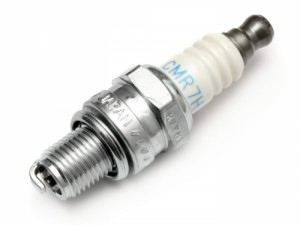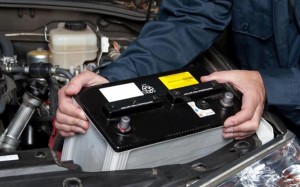It is very important to perform regular maintenance checks on your vehicle to ensure that everything is in perfect running condition. The best way to keep track of everything that needs to be checked is by following a vehicle maintenance schedule.
Rather than making one up on our own, we did tons of research and even checked out some helpful information from the Car Care Council. Here is our helpful vehicle maintenance schedule!
Check Frequently
 There are a few things that you will need to check on a regular basis to make sure that they are in working condition or that the fluid levels are at a reasonable place. There isn’t really a specific time frame that you absolutely must abide by, but it is a good idea to check it monthly as well as at other intervals that we will discuss a bit further on. These simple maintenance checks can easily be done in your own driveway or even when you are pumping gas at the gas station. They will only take a few minutes total and will give you peace of mind in between larger checks.
There are a few things that you will need to check on a regular basis to make sure that they are in working condition or that the fluid levels are at a reasonable place. There isn’t really a specific time frame that you absolutely must abide by, but it is a good idea to check it monthly as well as at other intervals that we will discuss a bit further on. These simple maintenance checks can easily be done in your own driveway or even when you are pumping gas at the gas station. They will only take a few minutes total and will give you peace of mind in between larger checks.
First you will want to check your dashboard indicator lights and all exterior lights. To check the dash indicator lights you will simply need to put your keys in the ignition and turn the car on. If all of the lights are on, you’re good to move on to the next item on your check list. If they do not all light up then you will want to check the fuse box for a blown fuse. The fuse box is usually on the driver’s side of the vehicle somewhere around the steering wheel. Fuses can be replaced for a very low cost. You will also want to check your head light, tail lights and brake lights. This is done while the car is on and the lights in the on position. You will need another person to tell you if your break lights are working though, so be sure to have someone around to do so. If one of these lights is out, you will need to check the fuse box as well as the bulb itself.
A few other things that you will want to check on your vehicle on a regular basis are going to be the tire inflation and condition, windshield washer fluid and the engine oil level. These too are very simple checks and may be done easily in your own driveway or at a gas station. You can check your tire inflation with an air gauge and fill it as needed with a home air compressor or with one of the big ones at a gas station. Checking the engine oil and windshield wiper fluid is super easy. Just pop the hood, take a peak in the fluid reservoir for the wiper fluid and pull out the dipstick for the engine oil level. You can easily add a bit of both if necessary.
Check Every 3-6 Months or 3-6,000 Miles
 It is advisable to do further maintenance checks every 3-6 months or 3-6,000 miles to ensure the health of your car and all its working parts. Even though you have regularly been checking your engine oil level, tires pressure and condition, windshield wiper fluid and all internal/external lights, it is still a good idea to give them another look during this maintenance check. You may perform these new maintenance checks yourself if you are knowledgeable enough or you can certainly take your car to a mechanic to do it instead.
It is advisable to do further maintenance checks every 3-6 months or 3-6,000 miles to ensure the health of your car and all its working parts. Even though you have regularly been checking your engine oil level, tires pressure and condition, windshield wiper fluid and all internal/external lights, it is still a good idea to give them another look during this maintenance check. You may perform these new maintenance checks yourself if you are knowledgeable enough or you can certainly take your car to a mechanic to do it instead.
For starters you will want to check your battery and cables, which can be done easily if you have the right tools or by a professional if they are already working under the hood. You will want to make sure that the battery terminal cables are securely attached to the batteries and check the battery power with an ohmmeter. The engine air filter is easy to locate and change if it needs to be replaced, which it will most likely need. The belts and hoses are a little more complicated to take care of on your own since each car has different ones in different locations. If you are not absolutely certain of the correct way to check them, it is a really good idea to have a mechanic or more knowledgeable person take care of it.
Some extra fluid levels will need to be checked at the 3-6 month or 3-6,000 mile vehicle maintenance check that are very important to the function of your car. Be sure to check the power steering fluid, automatic transmission fluid and engine oil. Once the levels are checked you will be able to determine if they need to be topped off or if you will need to flush them out completely and replace them. The exhaust system should be checked at this time as well. This again is another more complicated area and may require someone with more experience to take a look at it. The exhaust system runs through the entire engine in one way or another, so it easy best to avoid any issues as well as a high priced mistake by having a skilled person tend to it.
Check Every 9-12 Months or 9-12,000 Miles
 Some of the easier things to review during your vehicle maintenance check at 9-12 months or 9-12,000 miles are the coolant, windshield washer fluid and the windshield wiper blades. To check the coolant you may take a look in the radiator’s overflow tank or look into the radiator itself and refill as needed. We’ve already touched on where the windshield washer fluid goes, so you know where to check that already, but be sure to check the wiper blades at this time too. Windshield wiper blades tend to last a year or so and can be replaced at a low cost.
Some of the easier things to review during your vehicle maintenance check at 9-12 months or 9-12,000 miles are the coolant, windshield washer fluid and the windshield wiper blades. To check the coolant you may take a look in the radiator’s overflow tank or look into the radiator itself and refill as needed. We’ve already touched on where the windshield washer fluid goes, so you know where to check that already, but be sure to check the wiper blades at this time too. Windshield wiper blades tend to last a year or so and can be replaced at a low cost.
This next area requires much more skill and more tools than the average person has, so don’t be shy about taking your car to a shop to get this part checked out. At this point you will want to have the brakes checked because they may need to be entirely replaced or possibly just need a portion replaced. The wheel alignment along with the steering and suspension will need to be checked as well. There are specific tools that are needed to perform this check and the subsequent work, so here is another time that you will likely need to have it worked on in a shop. The chassis lubrication will need to be looked at this time too and possibly re-lubricated.
Luckily not all of the vehicle maintenance checks during the 9-12 month or 9-12,000 mile time period will require a visit to the mechanic. During this scheduled check you will want to get out your trusty air gauge to test the tire pressure as well as checking the tread for nails or regular wear. The cabin air filter and fuel filter can be replaced, but require a bit of skill to do so.